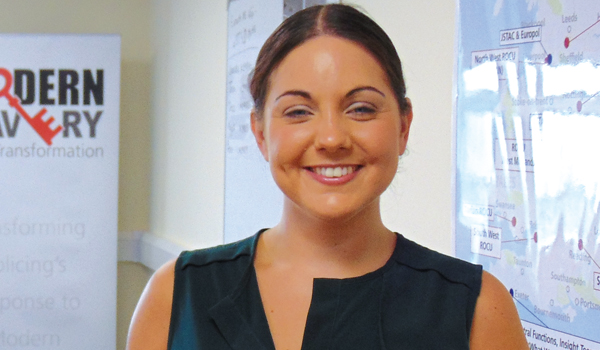AI in the human world of policing
In the second in this series of articles, Matt Palmer, Product Director, Public Safety at NEC Software Solutions, discusses how AI can help police forces, but always in a strictly supporting role.
In September 2024, policing’s first ever lead for AI, outlined some of the ways he expects AI to transform policing.
Temporary Chief Constable Alex Murray highlighted opportunities for AI to automate administrative tasks, help call handlers prioritise those who need their assistance most, and identify patterns and trends in evidence.
In a news article published by the National Police Chief’s Council (NPCC), Alex Murray goes on to say, “these gains in productivity mean officers and staff will ultimately have more time to be back out in their community.”
With strong backing from the top, there’s no doubt that AI has an increasingly important role to play in policing. But how do data, models and algorithms fit in to the most human of services – a service where every decision has the power to profoundly affect people’s lives?
Support with policing challenges
The fact is, there has never been a better time for policing to make use of AI and automation.
A difficult financial and social climate is putting the law enforcement sector under pressure. Heavy workloads, staff shortages, troubled communities and low levels of public trust are making the already demanding occupation of a police officer even harder to fulfil.
With fewer people and resources available to tackle increasingly complex situations, police forces need technology which can help them with a host of challenges. As Alex Murray points out in his article, “There is always more demand for policing than it can supply, and AI helps release officer time so they can concentrate on those who need them most.”
That’s where we get to the heart of the matter. AI will never replace police officers, it will only ever support them so they can do their jobs as well as possible.
This is the philosophy behind the Covenant for Using AI in Policing which has been endorsed by all members of the NPCC. The covenant applies a set of principles to policing designed to support scrutiny, integrity, and public confidence in the use of AI technologies.
With the responsible use of AI as outlined in the Covenant, police forces are already starting to reduce the administrative load, respond more effectively to incidents and detect patterns of crime, while leaving decision-making in the hands of the humans.
1. Targeted community policing
There are often calls for the police to be more visible in the neighbourhood, but with so many demands on policing, it can be challenging to manage a non-urgent, yet important community presence.
AI has a role to play by helping police control rooms prioritise tasks by tracking time and location, and optimising the way resources are allocated.
An AI tool which takes data from a police force’s to-do lists and investigation files, could match that data with information about officer availability and the areas they are patrolling. The advantage is that AI can make those matches much more quickly and accurately than a human.
Using AI in this way would save time and boost efficiency – and importantly it would help to raise a positive profile for the police in the community. For instance, when officers are likely to be on a particular patch, An AI tool could flag up people in the area who would benefit from a police visit.
The technology could highlight the opportunity to visit a resident who reported anti-social behaviour on their estate to see if the situation has improved, or to call in on a shopkeeper who has experienced harassment and provide them with reassurance.
By matching resources more closely to need, AI can ensure officers are visible to the people, and communities which need them most.
2. Efficient incident response
AI also has a role to play in getting help to people quickly, as incidents happen.
Call handlers and control room teams are experts at responding to incidents, but if they are talking to a person in distress, or dealing with a complex situation, it can be difficult to determine which resources are needed.
The ability of AI to assimilate information quickly, means the technology can provide real-time decision support in frontline policing.
Humberside Police have been trialling an AI system to improve their response to emergency calls. In a test scenario, a victim of domestic abuse called 999 because her ex-husband was trying to break into her house.
The call was transcribed by an AI software system which links directly into UK police databases. From this, the technology retrieved the man’s details and spotted he had a gun licence, indicating that police officers needed to get to the home as soon as possible.
As well as real-time assistance, AI can provide insight into how best to respond to certain categories of calls. By training AI systems on historical data, police forces can gain a better understanding of which resources to deploy. For instance, an aggravated burglary in a remote area might need the presence of a vehicle equipped with a drone, or a police dog.
Naturally, it’s important to make sure predictive policing tools like this are not trained on data where historical bias is present, because the bias can become embedded in the algorithms. Instead, police forces have a duty to work with developers who continually test systems for discriminatory patterns and use diverse and representative datasets to train their models.
With responsible use of AI, police forces can be sure their response to incidents is fair and proportionate.
3. Rapid identification of individuals
Another way AI can support the police is in identifying and locating people of interest.
There are certain tasks which AI can perform much more quickly and accurately than a human – or a team of humans – ever could. One of those is facial recognition, which makes use of CCTV data by identifying and measuring facial features in a digital image or video frame, and matching it with a human face.
By recognising a face in the fraction of time a human officer can, AI frees up the officer to interpret the results and decide which steps to take.
Live facial recognition compares a camera feed of faces against a predetermined database. This can support police in searching for individuals in real-time – a people smuggler at an airport, for example, or a vulnerable person who is missing.
Conversely, retrospective facial recognition compares still images of faces against an image database, and this can help officers see if a suspect is already known to the police. In one example of retrospective facial recognition, the Metropolitan Police tracked down a man who had stabbed a London bus driver.
When time is of the essence, AI can help police officers verify a person’s identity, so officers can act quickly to prevent crime and minimise harm.
As with other AI technologies, police forces have a responsibility to be open with the public about how and where facial recognition is used, and the steps taken to ensure its use is justified and unbiassed.
Transparency is the key to making tools such as facial recognition as fair and effective as possible.
Rapid innovation in technology is opening up tremendous opportunities to bring AI into many aspects of policing, with the opportunity to build a more effective, responsive and proficient service. AI has a critical role to play in supporting the police at a time of intense pressure.
However, the role of AI will always be that of a helpmate, and never an equal. As AI in policing lead Alex Murray, explains, “Police will remain at the heart of everything we do because violent disorder, domestic abuse, child sexual exploitation for example, will always need a trained officer to interact, offer support and make the final decisions, and that will never change.”
NEC is committed to the ethical development and use of AI to keep people and communities safe. More information about how the ethical use of AI can support policing can be found in this white paper: Artificial and human intelligence: partners against crime available to download here.
You can read the first article in the series here.






